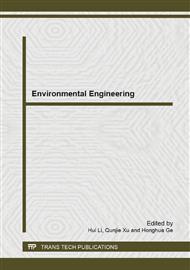p.2376
p.2383
p.2388
p.2392
p.2403
p.2408
p.2413
p.2418
p.2422
Effect of Ecological Water Supplement on Land Use and Land Cover Changes in Diaokou River
Abstract:
Diaokou River is one of the old courses of the Yellow River access to the sea before 1976 and its estuarine delta is an important part of National Nature Reserve of Yellow River Delta. The Yellow River Conservancy Commission decided the ecological water supplement to the wetland during the water and sediment regulation period in 2010. In this study, we analyzed the land use and land cover changes before and after the ecological water supplement in Diaokou River by using HJ-1B CCD data. The impact of the ecological water supplement on land use and land cover changes in Diaokou River was remarkable. The expansion of shrub-grassland and water body at large scale is conspicuous, while decreasing areas of shallows was 15.03 km2 and unutilized land decreasing amplitude was 28%. The main area of land use change was in Yiqianer protected areas, where concentrated in the estuary of the Diaokou River.
Info:
Periodical:
Pages:
2403-2407
Citation:
Online since:
December 2013
Authors:
Price:
Сopyright:
© 2014 Trans Tech Publications Ltd. All Rights Reserved
Share:
Citation:


